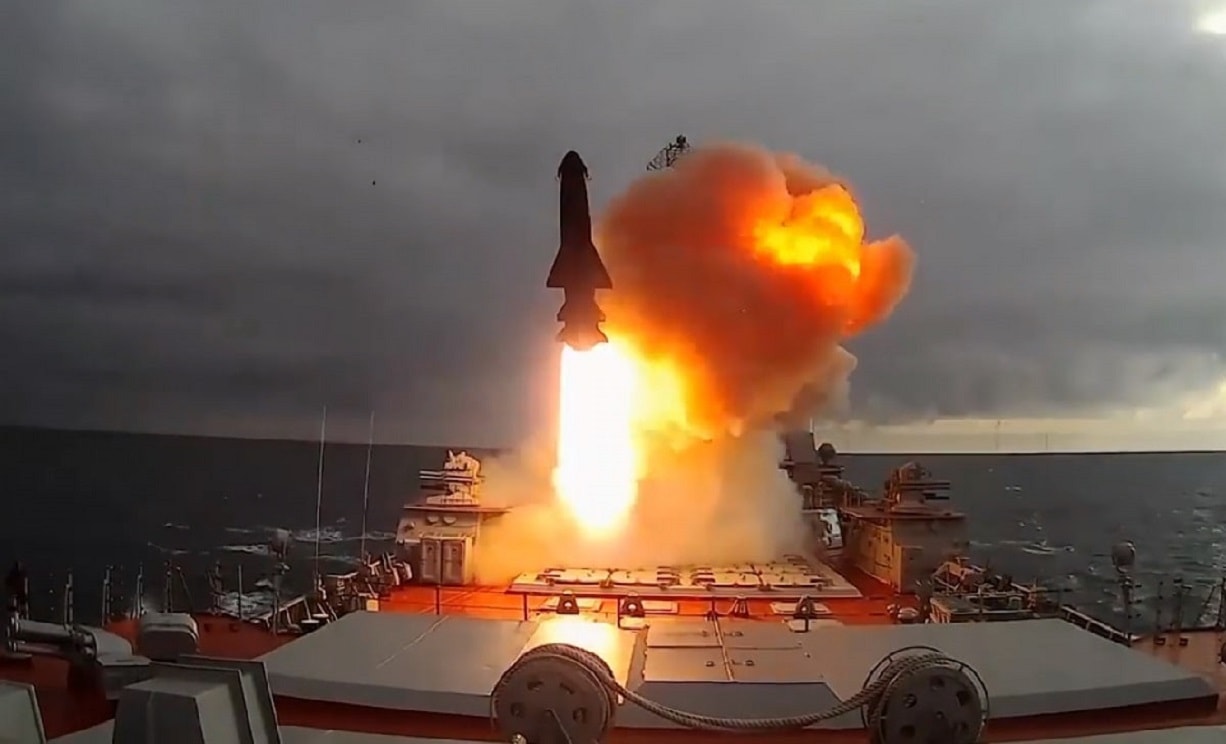The new Russian Tsirkon Hypersonic Cruise Missile is another step closer to being a fixture in the Russian arsenal. Last month the Tsirkon completed a successful test launch from a submarine and Vladimir Putin was enthused, to say the least.
The MACH 7 to 9 scramjet cruise missile has much to write home about and is shaking up the military balance between the United States and Russia. The two launches in early October happened from a Severodvinsk submarine in the Barents Sea – one from the surface and one under the sea at a relatively shallow depth of 131 feet.
There Have Been Other Successful Tests
This summer, the Russian Navy frigate Admiral Gorshkov, known for being able to steam around the world, fired the hypersonic at a target on land 217 miles from the ship in the White Sea. The missile has a range of 620 miles and could reach a target within seven minutes. The Russians want the Tsirkon to be permanently deployed on the frigate Admiral Golovko. Six more guided-missile frigates of this class are under construction so that would give the Russians many opportunities to carry Tsirkons into battle.
Land-based Tsirkon?
This is just what Putin wanted as he has boasted before about the Tsirkon being able to hit any target at sea and land and to be launched from ship or submarine – particularly the Yasen-M cruise missile sub. This makes the hypersonic missile an anti-ship munition as well as a ship-to-shore weapon for coastal targets. Putin may also choose to construct a land-based version of the Tsirkon since testing is going so well.
It’s not clear if the Tsirkon is nuclear-capable. If so, this would be a troubling development for the West and would make it an intermediate-range nuclear weapon last governed by the INF Treaty, which the United States withdrew from in 2019. Putin has vowed to even the score with the Americans for pulling out of the treaty, and at least from what we can gather, the Tsirkon is a step on that troubling direction.
American Missile Defenses May Have Trouble
The Tsirkon is going to be difficult to spot on U.S sensors and radars. The Americans depend on their Aegis Combat System, which is effective against conventional missiles. But the Tsirkon will give the Aegis fits. Aegis needs eight to ten seconds of reaction time to intercept incoming missiles. However, In that time, the Tsirkon will already have traveled at least 12 miles, and the Aegis interceptor missiles may not be able to catch up.
Putin Is Making Political Moves Too
Putin has political reasons in addition to military reasons for the development of hypersonics: it restores Russia to greatness, at least the thinking goes. It makes the West fearful. It reestablishes Russian pride not seen since the Cold War. As a result, NATO is anxious too. Members such as Poland and Lithuania, if the Tsirkon becomes a ground-launched missile based in Kaliningrad, have more reason to worry. The Russian enclave of Kaliningrad already has the Iskander nuclear-capable land attack missile in that part of Europe that keeps the Lithuanians and Poles concerned to say the least.
Tsirkon Mean Troulbe for NATO
The Russians have been patient with the Tsirkon’s 20-year development trajectory. They should be given credit for sticking with the hypersonic concept. It is probably going to be very difficult to track and detect this missile and that spells trouble for the United States and NATO. It looks like it will be ready by early 2022, if it continues to hit its milestones.
1945’s new Defense and National Security Editor, Brent M. Eastwood, PhD, is the author of Humans, Machines, and Data: Future Trends in Warfare. He is an Emerging Threats expert and former U.S. Army Infantry officer.

